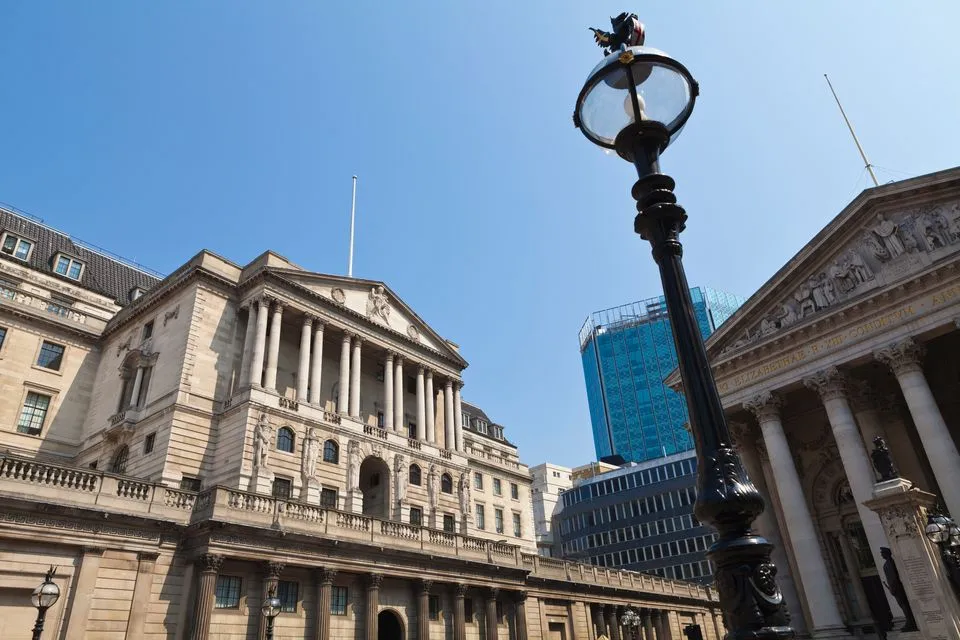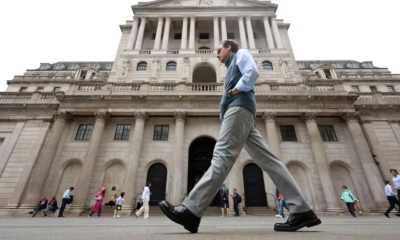Business
Bank of England Signals Shift in Monetary Outlook

The Bank of England has entered a new policy phase, signaling a gradual shift toward monetary easing after three years of aggressive rate management. The latest Monetary Policy Committee meeting kept the base rate unchanged at 4 percent, but Governor Andrew Bailey indicated that future cuts may be considered if inflation remains stable. This represents the clearest signal yet that the central bank is moving from crisis management toward sustainable growth.
Inflation, which once soared above 10 percent, has now fallen to near the 2 percent target. While energy and food prices have moderated, underlying costs in housing and services remain elevated. The Bank’s new communication strategy emphasizes patience and precision, with policymakers committed to ensuring that inflation expectations remain anchored without triggering an economic slowdown.
Financial Markets React to Policy Stability
Markets welcomed the central bank’s tone, interpreting it as a vote of confidence in the UK’s recovery trajectory. Sterling gained modestly in early trading, while bond yields declined as investors adjusted their expectations for future interest rate paths. London’s equity indices also rallied slightly, driven by banking and construction stocks, sectors that typically benefit from a more predictable monetary environment.
Analysts at major financial institutions suggest that the Bank’s forward guidance has reduced volatility in short-term debt markets. The move has also given firms more clarity for medium-term planning, particularly in sectors sensitive to borrowing costs such as housing, manufacturing, and consumer credit.
A Balancing Act Between Growth and Inflation
Despite the optimistic tone, policymakers face a complex balancing act. A premature easing of rates could reignite inflationary pressures, while maintaining restrictive conditions may undermine business investment. The Bank’s challenge lies in calibrating policy to support growth without compromising stability.
Economic data from the Office for National Statistics shows moderate expansion, but productivity levels remain sluggish. Wages continue to grow at around 5 percent annually, sustaining consumption but raising concerns about embedded inflation. The Monetary Policy Committee is expected to take a cautious approach, focusing on data trends rather than political pressure or market sentiment.
Mortgage and Lending Sectors Feel the Shift
One of the most immediate effects of the Bank’s new stance is visible in the housing market. Mortgage lenders have started lowering rates for fixed-term products, reflecting greater confidence in stable monetary conditions. The easing of borrowing costs could stimulate property transactions, particularly among first-time buyers who were previously priced out.
However, experts warn that any recovery in housing activity will depend on broader economic conditions. Construction firms continue to face high material costs and supply chain disruptions. Financial institutions are also tightening credit assessments to prevent overextension in a still-uncertain global environment.
Business Confidence and Investment Trends
Corporate sentiment has improved moderately following the Bank’s latest decision. Surveys conducted by the Confederation of British Industry show rising expectations for capital expenditure in 2026, particularly in digital infrastructure, automation, and renewable energy.
Small and medium-sized enterprises remain cautious but report increased willingness to reinvest profits. The Treasury’s tax incentives for green innovation and research are expected to complement monetary policy adjustments by encouraging sustainable business growth. Analysts believe that this alignment between fiscal and monetary measures is critical to unlocking productivity gains across the economy.
Global Context and Policy Coordination
The Bank of England’s decision comes as major central banks worldwide reassess their strategies amid slowing global inflation. The U.S. Federal Reserve and the European Central Bank have both hinted at possible rate reductions in 2026, marking the end of one of the most synchronized tightening cycles in recent history.
For the UK, coordination with international monetary policy is essential to prevent capital flight and currency volatility. A stable global environment also enhances London’s status as a preferred financial hub. The government’s continued commitment to regulatory transparency and open-market access has further strengthened investor confidence.
Market Resilience and Financial Innovation
London’s financial sector remains one of the most adaptive in the world. The emergence of digital finance, blockchain-based settlements, and AI-driven analytics has redefined how capital is allocated and managed. The Bank of England has also advanced its digital currency research, exploring frameworks for a potential digital pound that would enhance transaction efficiency and financial inclusion.
By maintaining a balance between innovation and risk management, policymakers aim to position London at the forefront of global financial modernization. This strategy, combined with a measured monetary approach, could ensure the UK remains resilient amid international economic shifts.
Outlook for 2026
Looking ahead, the trajectory of UK monetary policy will depend on inflation stability, wage trends, and international capital flows. A gradual easing cycle could begin by mid-2026 if economic indicators continue to improve. The Bank’s focus on long-term financial sustainability, rather than short-term market reactions, underscores a renewed confidence in institutional credibility.
The current environment signals the end of an era dominated by emergency responses and the beginning of a more balanced policy framework that integrates fiscal responsibility with innovation and growth.




















